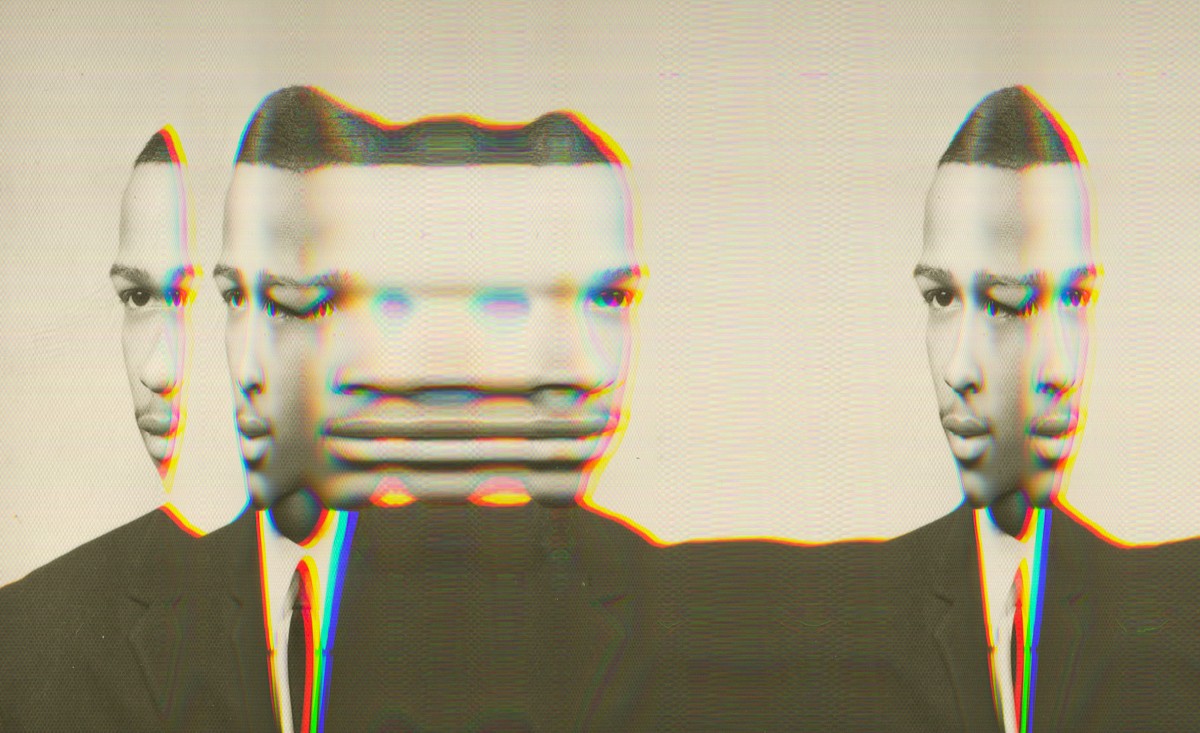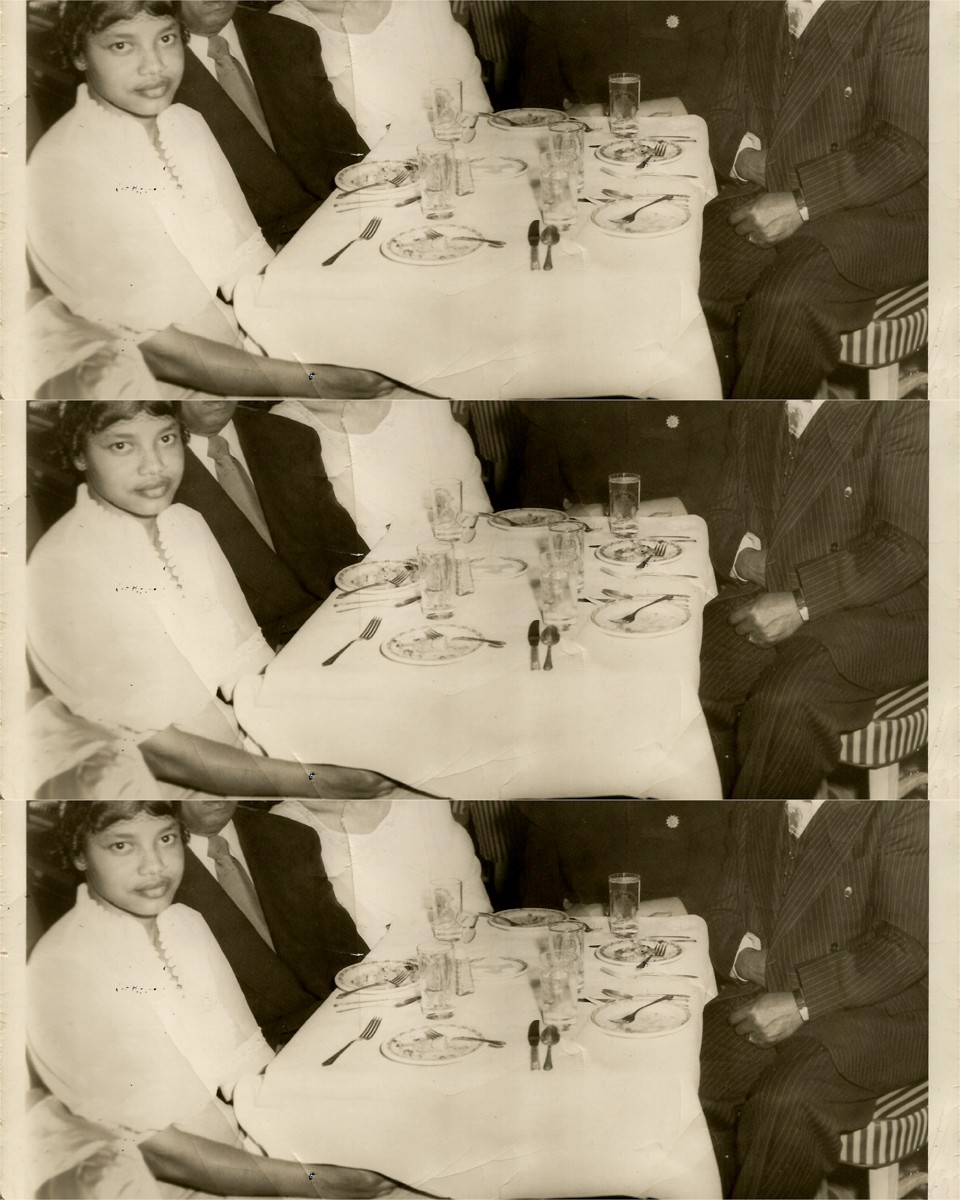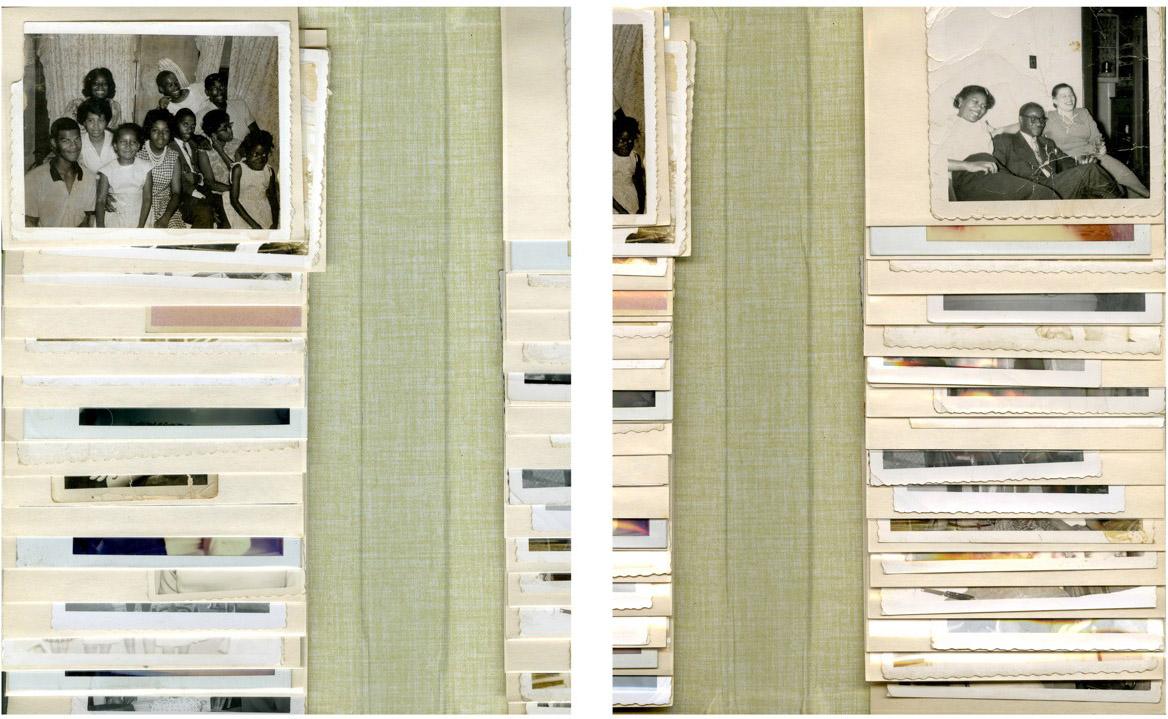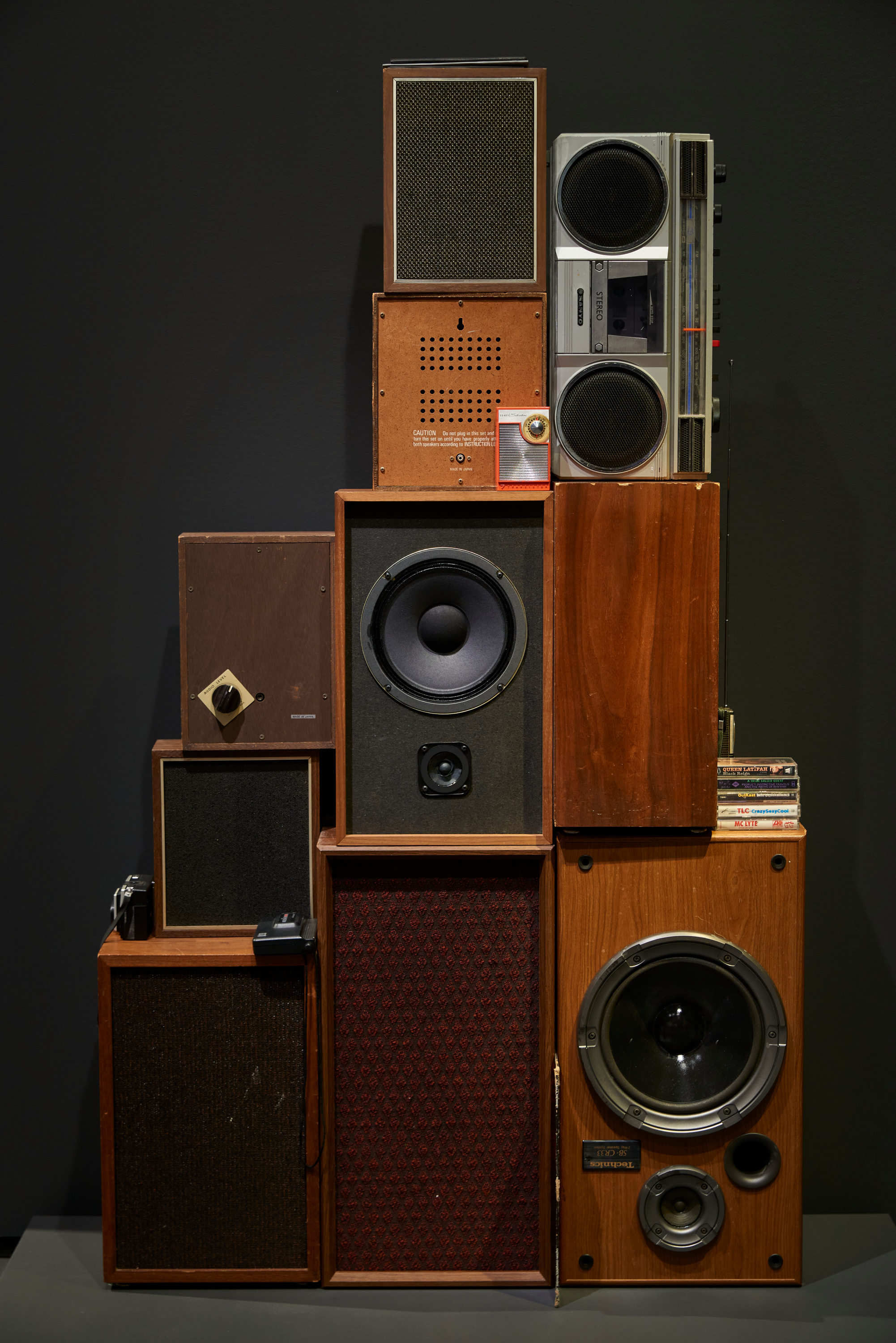Jen Everett
Interview (2023)
How do you see your unique perspective and aesthetic as an artist? Also, please tell us about your background and identity that have developed it.Being a Black woman who is also queer informs how I move through the world. My recent work is engaged with the depths of Black interiority. I use rupture as a conceptual and formal framework in my practice.
Redoubled/Something We Carry This ongoing series investigates the relationship between rupture and Black interiority through the reconfiguration of collected, vernacular photographs.

Digital Collage
Variable
2019

Digital Collage
Variable
2018

Pigment Print
16 inches x 20 inches
2017

Digital Collage
Variable
2018
Your profile states that you are “interested in the myriad ways Black people produce and transmit knowledge.” When and how did this interest become clear to you?During graduate school I began to recognize how certain types of knowledge are invalidated if they exist outside of academic settings. I believe rigor is present in practices in excess of formal institutions. My work seeks to celebrate that.
My understanding is that your practice was initially based on photography, primarily portraiture, but you have since produced the Redoubled/Something We Carry series, which is a collage of collected photographs with repetitive and glitched effects, and the Unheard Sounds, Come Through series is presented in the form of an installation composed of selected objects. What led you to this transition in your artistic practice?I made my first installation of collected objects in 2017 as a tribute to my late grandfather. I never envisioned the work becoming a series, but I kept finding similar objects—wooden speakers, slide carousels, cassette tapes, etc. When I brought them into my studio and began arranging them the work came.

Image courtesy of Baltimore Museum of Art
Photo: Mitro Hood
We saw Unheard Sounds, Come Through on your website and were immediately attracted to it. What did you think about why we, as Japanese people, who did not understand any context or your background, were interested in this series?That’s a fascinating question. I am drawn to the objects present in these installations partly because they remind me of the obsolete media technologies of my childhood. Perhaps there is a shared longing for the boxy speakers, cassette tapes and vinyl records because now we have technology that performs the same functions yet fits in the palm of our hands.
What was the genesis of the idea for this series? And what was the process by which the idea developed?The process is one of collection and arrangement. I am always working in these modes on some level. The idea/genesis was revealed after sitting with the material and considering what I found compelling about it.
Although I have read the description for this series on your website, please tell us a little more about the story that can only be told by the selection of these objects and their composition.It’s a story or at least a suggestion of what poet and scholar Elizabeth Alexander calls The Black Interior. It is a metaphorical space where we are unencumbered by the burden of representation.
The caption reads, “the objects are meticulously stacked and subject to reordering”, but when actually laying them out, are you keeping something specific in mind, or are you guided by your creative impulses and following your own sensibilities?My process is very intuitive. I collect and arrange the objects, taking pictures as I go to document different configurations and make adjustments as needed.
How does your background with a bachelor’s degree in architecture influence the composition of objects in this series?Studying architecture provided a sense of space, structure and physics. These skills come through in the making of this work.
I read that this series is an evolving installation, is there any prospect that it will evolve in any way in the future?I would love to scale up these installations and collaborate with a performing artist.
Some of your work uses archival photos and videos of your family as source material. Do any of the objects in this series have family origins? Do you pay particular attention to objectivity when you employ such archives?Most of the items are sourced from secondhand shops. They had a life before they came to me, they have a material trace. I don’t concern myself with being objective in my work. I want to practice care and discretion when I consider what should be revealed and what should be withheld.
If for you, creating artwork is an act of expressing what is inside yourself, what exactly is that “something”? As you have changed your method of expression, has that “something” also changed?My first solo museum presentation titled Could You Dim the Lights? is currently installed at the Krannert Art Museum. It is co-curated by Amy L. Powell and Blair Ebony Smith. I am so grateful to be able to present my work at this scale. And I’m excited about the ongoing programming. I have so much gratitude for the artists and scholars I’ve been in collaboration with as part of the show’s run. I also have an exhibition opening at Rivalry Projects in the fall which will have additional works from the Unheard Sounds series so I am furiously preparing for that.
The last part of your question is more complicated. My vision for the future must acknowledge that we are living in divisive and precarious times both nationally and globally. I don’t always know what that means for my life or creative work. What I do know is that I must continue to practice care and collaboration and resist doctrines of individualism and isolation as sustainable ways of being.